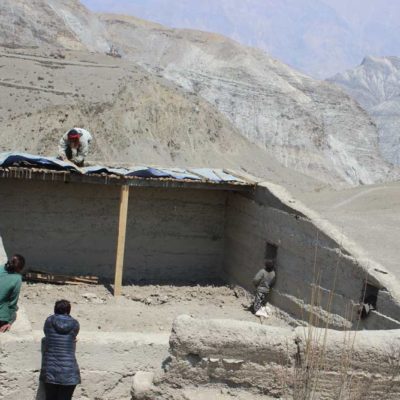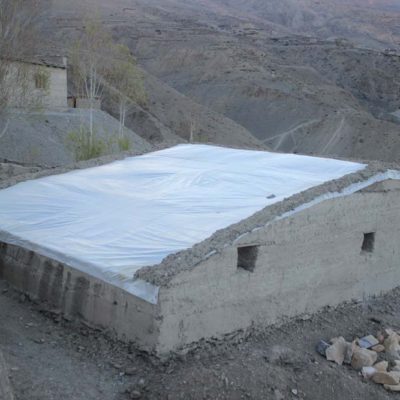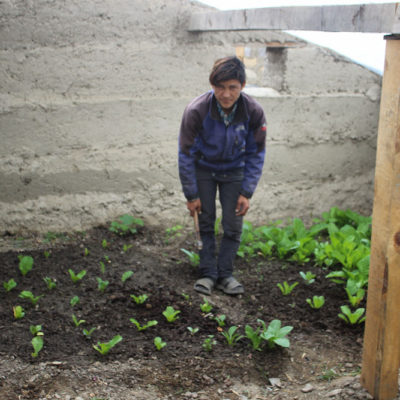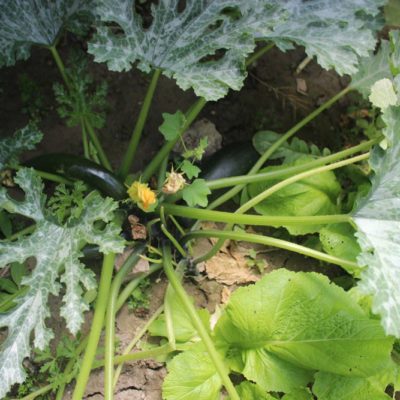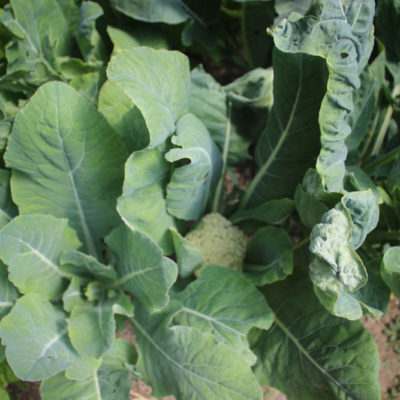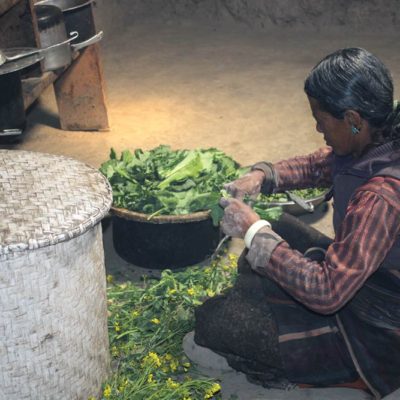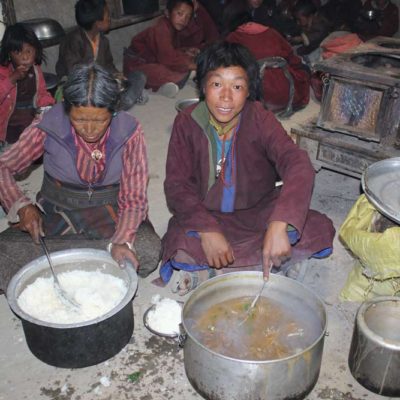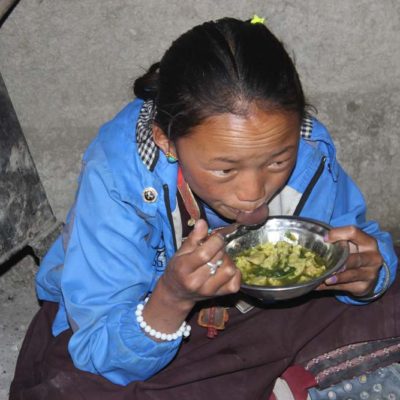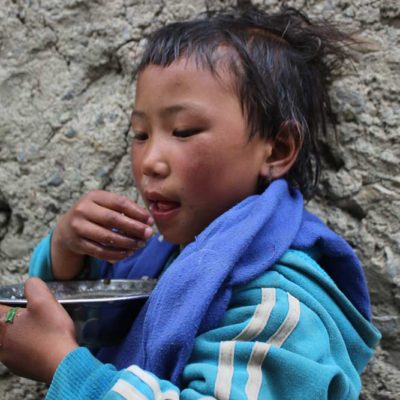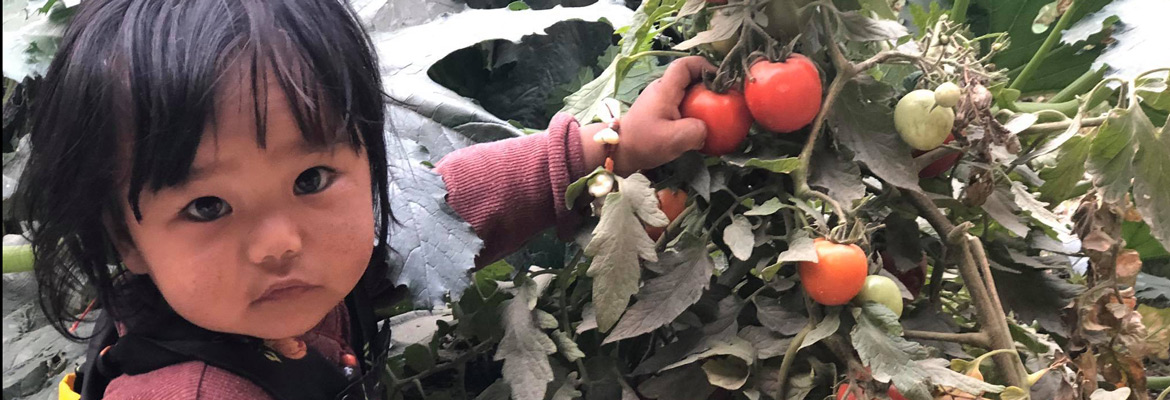
In the greenhouse at Komang School – image credit – Nyima Bhuti
Greenhouses
Most villages in the Dolpo are between 3,500 and 4,000 metres. The growing season is very short. Field crops here are basic, barley, buckwheat and potatoes. Vegetables that can be grown in greenhouses – greens, carrots, cucumber, cauliflower, cabbage and squash, even tomatoes – dramatically improve nutrition and food security.
When I first traveled to Dolpo in 2015, I saw very few greenhouses, maybe five or six. When I returned in 2017, there were at least 15 – 20 in the same region. The popularity of greenhouses attached to homes is increasing exponentially. There were many requests for greenhouses in 2020. A generous sponsor provided dedicated funds for 10 greenhouses. Our goal was to provide materials for another 10 – 20 greenhouses. Materials for 50 Greenhouses were provided, thanks to you! Most were completed 1n 2021.
The cost of greenhouse materials and their transportation is ~ $500 US per greenhouse. Materials such as plastic, wire, hardware, seed and irrigation equipment are purchased in Kathmandu. Any wood products needed for doors and vents are purchased in the Lower Dolpo. Structural walls are made from local materials such as stone and / or rammed earth.
Greenhouses are becoming critical for food security as the Dolpo is increasingly impacted by climate change. Seasonal precipitation patterns have become erratic, some years there is not enough snow to provide melt water for the villagers water needs, other years there is too much snow and people and their livestock are killed by avalanches. In recent summers, unusually heavy rains have caused washouts of trails, small bridges and the terraces that are used to grow their staple crops.
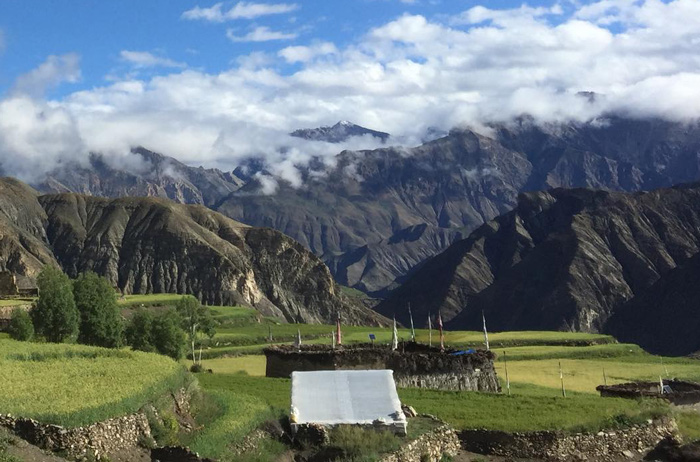
photo courtesy of Peter Hinze
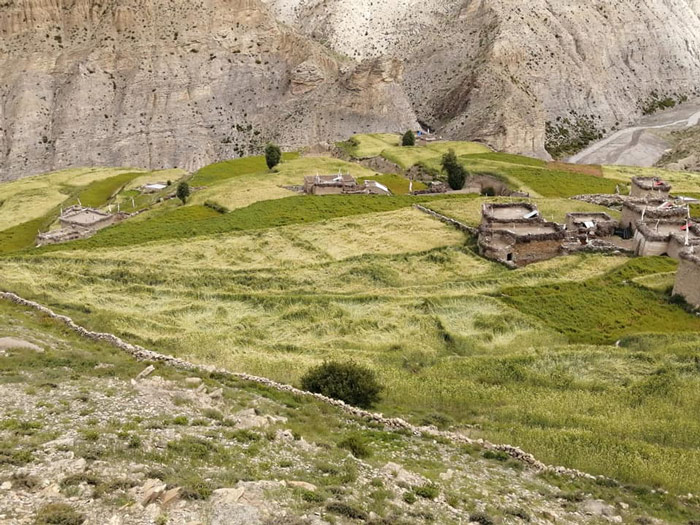
information and image credit: Wangchen for Change
Climate change is also bringing torrential hailstorms that flatten their fields. When the stems of unripe barley and buckwheat are broken they cannot be harvested and people and animals go hungry.
Greenhouses are a multifunctional amenity here. Schools use them as a warm well lit classroom in the winter.
Villagers often build their greenhouse attached to the south side of their home. It helps heat the home in the winter months, and it provides them with a warm bright room for weaving, and for household and community affairs.
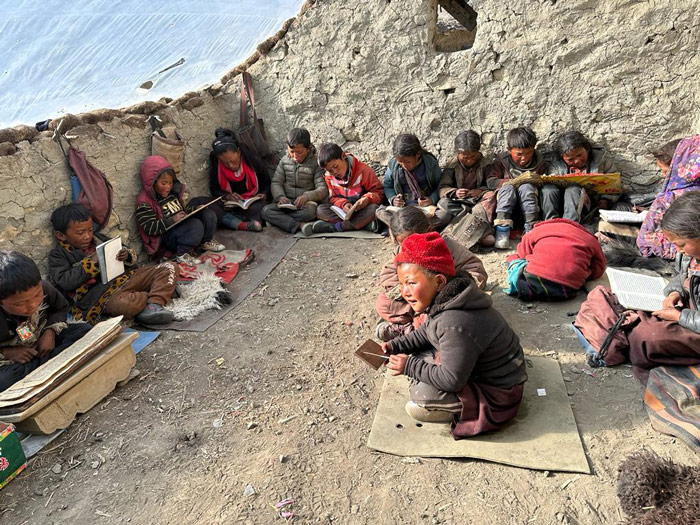
Winter class in the Komang School greenhouse
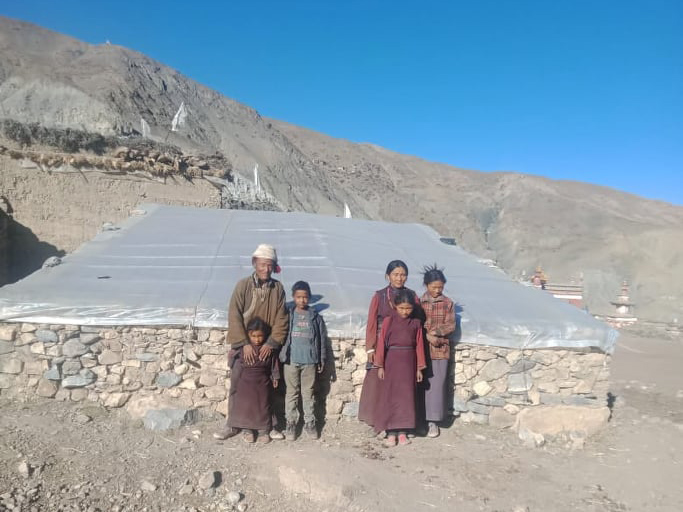
Pema Dargyal and his family
‘The greenhouse has helped us in many ways. I found it very useful in winter when I have children to take care of. Inside, it will be warm and no winds. From early spring we can start farming inside and surprisingly these leafy green vegetables grows faster than I expected. Thank you!’
– Pema Dargyal, farmer and yak herder
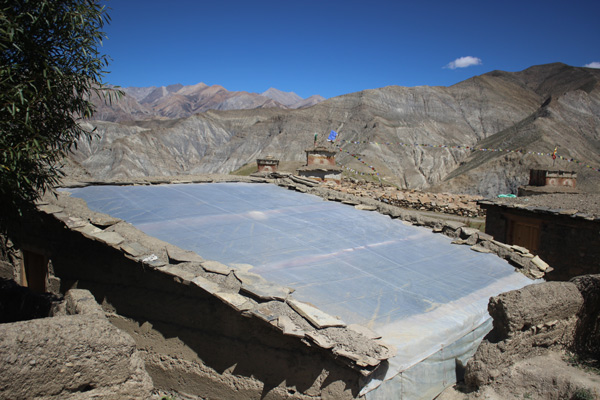
In 2016 we sponsored the building of this greenhouse for Saldang School.
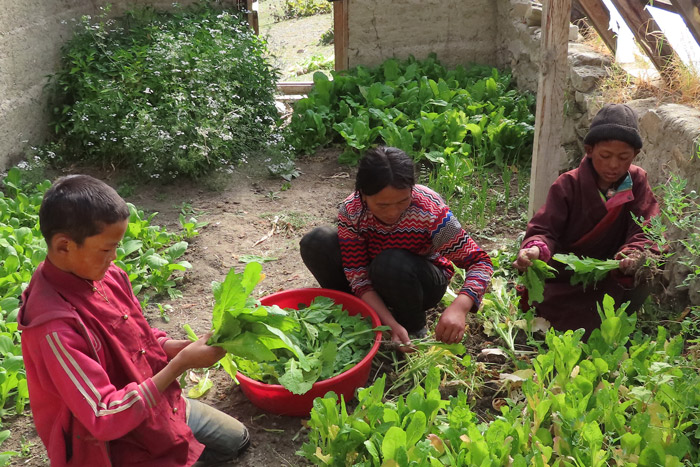
In 2021 we sponsored the building of this greenhouse for Karang School.
The greenhouse at Saldang is a tremendous asset to both the school and the village. It provides better food security by extending the growing season and improving the quality of fresh vegetables for the student lunches and staff meals. In winter, a monk from the monastery holds classes for students to learn about their Tibetan history and culture. The greenhouse is providing them with a warm and bright classroom on sunny winter days!
above image courtesy of Peter Hinze
gallery images courtesy of Pema Wangyal Lama – Saldang School
“It is every man’s obligation to put back into the world at least the equivalent of what he takes out of it.”
– Albert Einstein

